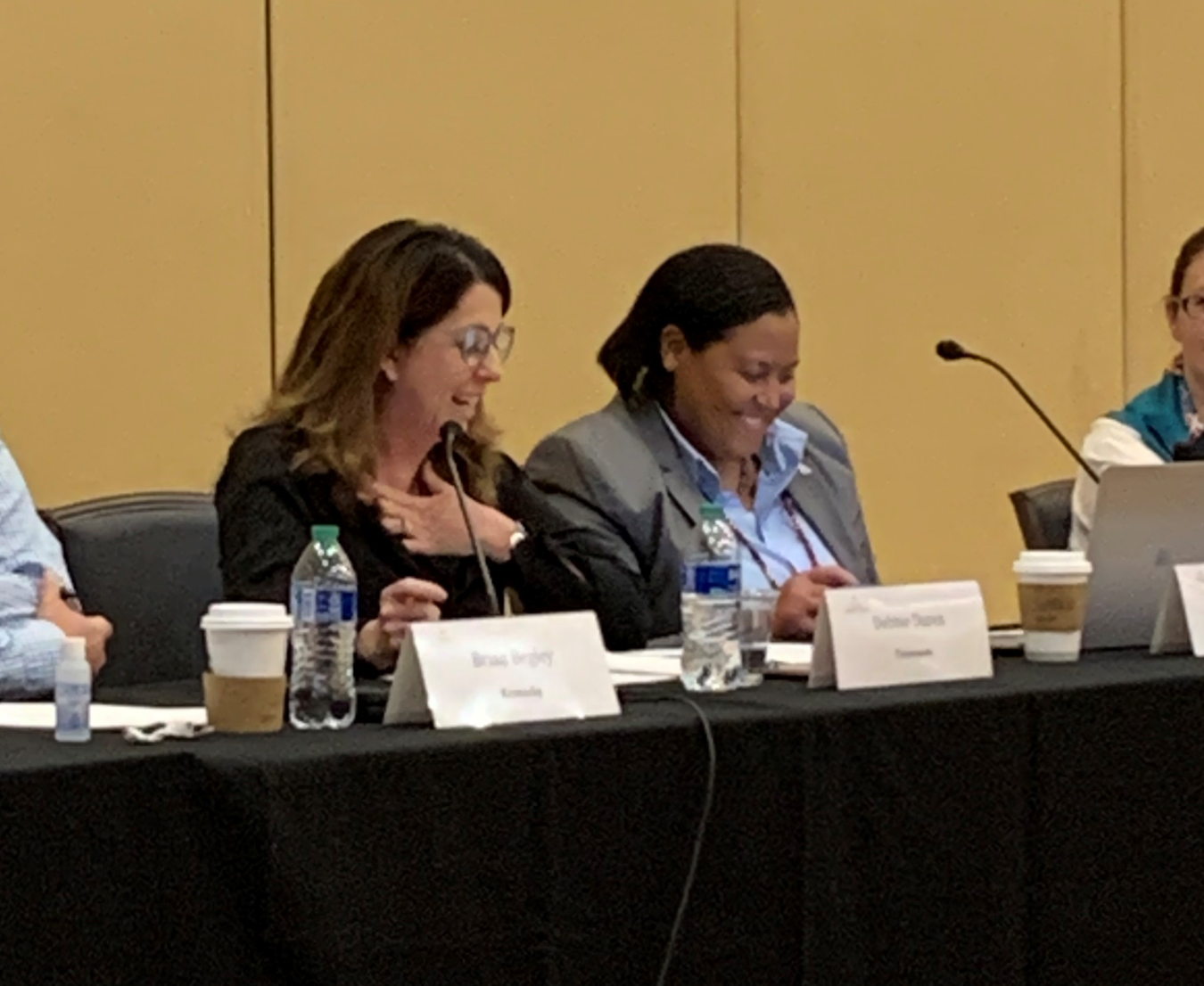The State and Tribal Government Working Group (STGWG) toured a new interpretive center at a site where EM completed remediation about 20 years ago and received updates from the cleanup program on workforce development and other topics.
Office of Environmental Management
May 24, 2022ST. LOUIS – The State and Tribal Government Working Group (STGWG) toured a new interpretive center at a site where EM completed remediation about 20 years ago and received updates from the cleanup program on workforce development and other topics during its recent annual spring meeting.
Also at the three-day meeting, representatives from Jemez Pueblo, the Advisory Council on Historic Properties and DOE’s Office of Congressional and Intergovernmental Affairs briefed STGWG.
The working group provides a forum for communication among states and tribes affected by EM sites and activities. STGWG focuses on several priorities, such as: long-term stewardship, natural resource damage assessment and restoration, and state and tribal issues related to the cleanup and closure of DOE sites.
“Many STGWG members have been on the working group for many years,” EM Tribal Affairs Program Manager Jill Conrad said. “Having this chance to share perspectives and ideas is invaluable. STGWG has guided EM on many subjects over the years.”
STGWG members toured the Weldon Spring Site Interpretive Center, whose exhibits address the history of the Weldon Spring area, the site’s contributions to World War II and the Cold War, cleanup and continuing long-term stewardship. Nearby the center is a rock-covered hillside with stairs to the top of the Weldon Spring Site Disposal Cell — a 41-acre engineered structure designed to contain the site’s waste resulting from cleanup.
EM conducted remediation at the Weldon Spring Site in accordance with Comprehensive Environmental Response, Compensation, and Liability Act regulations. The site was transferred to the DOE Office of Legacy Management (LM) in 2003 for long-term surveillance and maintenance.

Kristen Ellis, EM’s acting director of regulatory, intergovernmental and stakeholder engagement, provided updates to STGWG on EM progress, including science, technology, engineering and math (STEM) and workforce development, which are priorities for the working group.
STGWG members also discussed long-term stewardship of EM sites. They were briefed on the actions of DOE’s National Long-Term Stewardship Working Group, which is comprised of representatives from EM, LM and the National Nuclear Security Administration. The working group is considering STGWG’s guidance as it forms its own goals and plans.
Ira Matt, director of the Office of Native American Affairs for the Advisory Council on Historic Properties, gave a detailed presentation on a memorandum of understanding on interagency coordination and collaboration for the protection of indigenous sacred sites, which was signed by Energy Secretary Jennifer Granholm last year.
Jennifer Kramb, with DOE’s Office of Congressional and Intergovernmental Affairs, discussed funding opportunities under the Bipartisan Infrastructure Law.
Clarice Madalena, Jemez Pueblo’s director of environmental programs, concluded the meeting by sharing a comprehensive illustration of the pueblo’s program to sample and monitor for contamination on Jemez Pueblo land.
To receive the latest news and updates about the Office of Environmental Management, submit your e-mail address.

